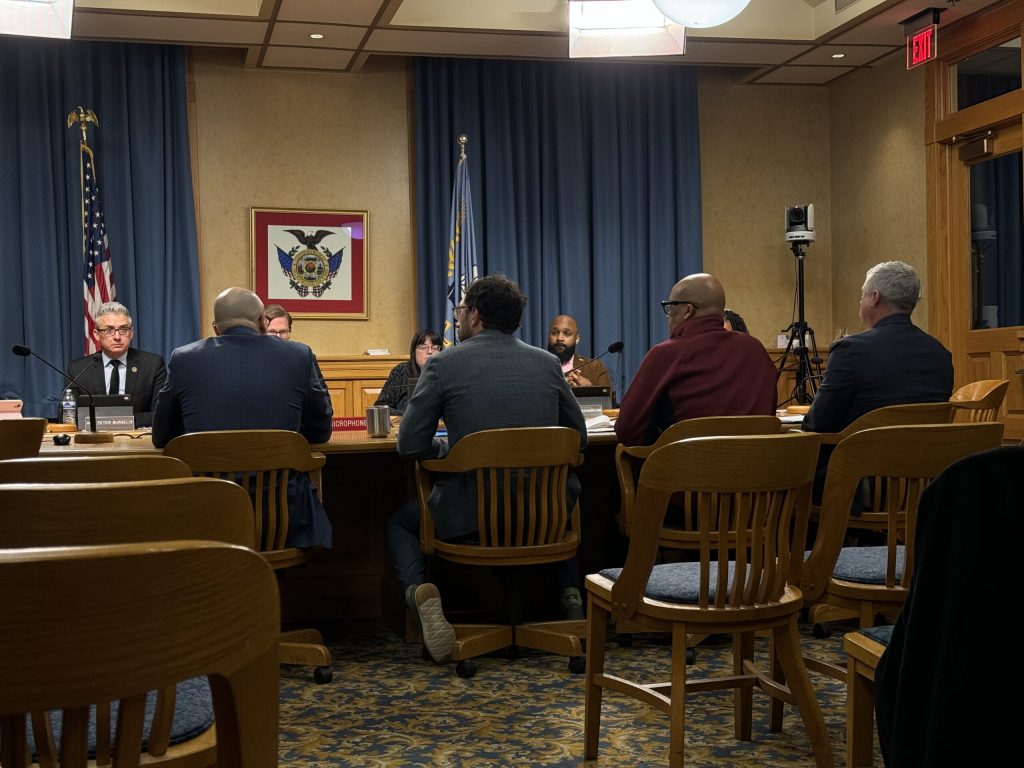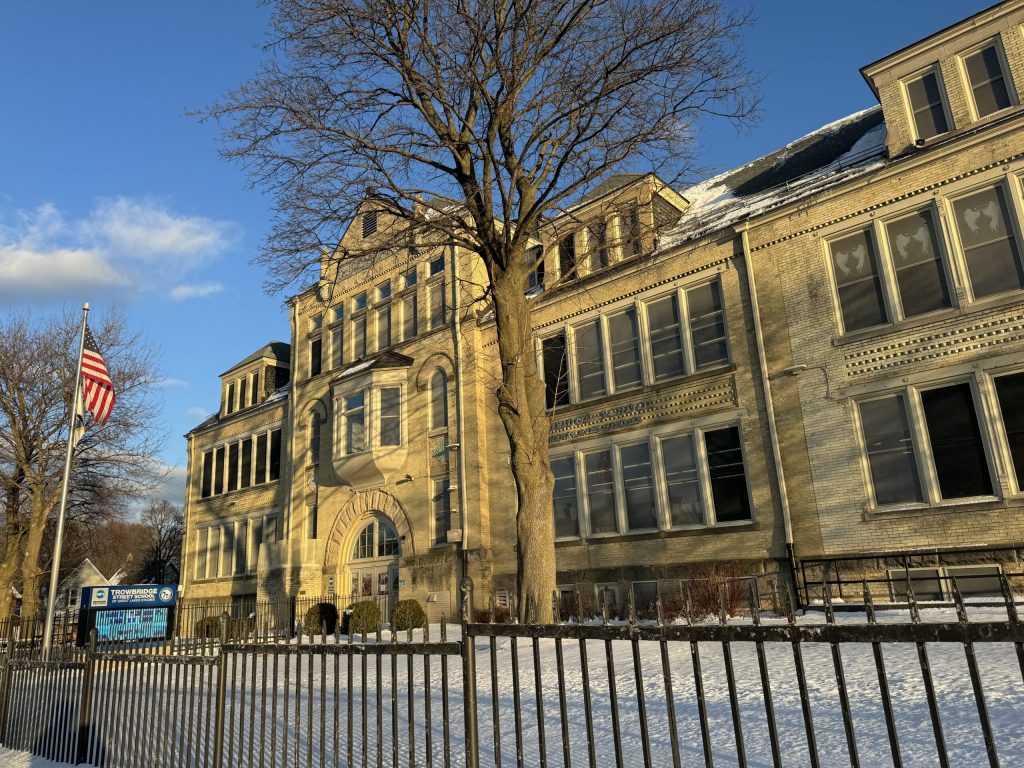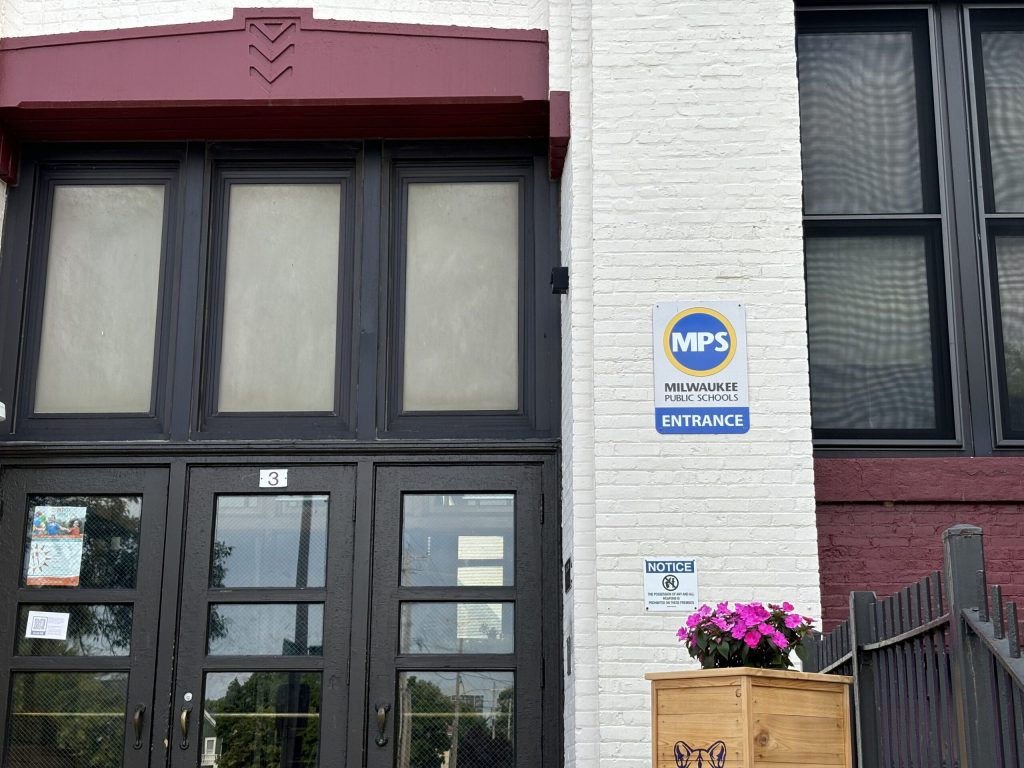Health Department May Shut Down Some Milwaukee Schools With High Lead Levels
Gov. Evers' budget plan has funding for lead risk investigations, mentions MPS lead levels.
For the past few weeks, Kristen Payne has been forced to make the difficult decision to send her third grader to school.
Her child attends Golda Meir Lower Campus in Milwaukee. A recent lead risk assessment from the Milwaukee Health Department determined all floors and windowsills at that school were considered to be a “dust lead hazard.”
Payne said she and other parents now have concerns about how widespread the issue is at other schools across the district. Payne and others have started a website and petition in response to the elevated lead levels, asking for more transparency from the district.
“I really expect more widespread testing of the schools to know the full scope of this problem,” Payne said. “That needs to happen.”
City officials gathered earlier in the month to announce dangerous levels of lead dust had been found at Golda Meir Lower Campus and Kagel Elementary School in Milwaukee. One student at each of those schools tested positive for lead poisoning.
Health officials said on Feb. 11 that two additional students have tested positive for lead poisoning. Those children attend Maryland Avenue Montessori School and Trowbridge Street School of Great Lakes Studies. Lead risk assessments are now underway at those schools.
Tyler Weber, the Milwaukee Health Department deputy commissioner for environmental health, said the cases are the first time schools within the Milwaukee Public Schools system were identified as the cause of lead poisoning in children.

Health department and Milwaukee Public Schools officials attend a Feb. 21, 2025 meeting at Milwaukee City Hall. Evan Casey/WPR
Officials with the health department told city leaders Friday they may move to shut down classrooms or schools in Milwaukee in the near future to clean additional buildings that may have lead risk hazards. That comes as the department is planning to ramp up testing for more school children across the district.
“Shutting down and closing classrooms and/or schools is becoming our recommendation,” Weber said during the Milwaukee public safety and health committee meeting Friday.
Mike Totoraitis, the city’s health commissioner, called the situation a public health emergency. But the health department did not offer a timeline on when a decision would be made.
Weber has said there is “deteriorated paint” and “paint chips on the walls” at Golda Meir Lower Campus and Kagel Elementary School.
“You don’t have this level of paint chipping if you’re staying on top of maintenance,” Weber said Friday.
Gov. Tony Evers’ proposed budget, which was released last Tuesday, also mentions the issue. He is proposing funding for lead hazard investigations.
“Failure to act swiftly and effectively will place children at serious risk of lead poisoning, developmental delays, and other possible health complications,” the budget brief said.
When asked about the situation last week, he said the issue at MPS is “unbelievably bad.”
“I mean … this should have been taken care of years ago,” Evers said.
Around 85 MPS schools built before 1978
There are around 85 schools in the MPS system that were built before 1978 when lead-based paint was banned. Harris, the interim chief school administration officer, said those include 26 high schools and five middle schools. The other 54 schools are kindergarten through eighth grade or kindergarten through third grade, according to Harris.
Nearly 70,000 students are enrolled at MPS, while around 8,500 staff are employed by the district.
Harris said district staff walk through schools with building engineers to identify any maintenance issues every year. They then make a checklist and put out work orders for repairs.
Several photos in the lead risk assessment reports for Golda Meir Lower Campus and Kagel Elementary School show peeling and chipping paint throughout the building. Milwaukee Alder Peter Burgelis asked Harris if those rooms and areas were “forgotten, skipped, overlooked,” by district staff.
“I don’t have that information right in front of me,” Harris said during the meeting. “So I would have to follow up with that.”
Harris said the district used to have 15 to 20 painters. They now have five.
After the meeting, Harris spoke to reporters.
“We are doing everything that we need to do right now to address this issue, to ensure the safety and wellbeing of staff and students,” Harris said.
“I would say that work has been done,” he added. “The amount of work, or — has it all been done? No. But work has been done in our schools to remediate this issue.”
The district has said they’ve “certified lead paint renovator painters” who are working within Golda Meir Lower Campus and Kagel Elementary School.

Michael Harris, interim chief school administration officer for Milwaukee Public Schools. Evan Casey/WPR
Lead risk reports stressing Milwaukee Health Department
Weber said staff with the Milwaukee Health Department are working overtime to complete the lead risk assessments for the schools. It takes six to eight lead risk assessors around six hours to complete the job. Each lead risk assessment costs around $10,000, according to the health department.
“There’s not enough weeks in the year for our lab to handle the schools that we would need to look at, and that is even putting aside our standard caseload of 100, 200 cases that we have to work with per year,” Weber said.
Evers’ 2025-27 executive budget is proposing more than $6 million to support “lead poisoning intervention and response,” according to a statement from the governor’s office. That money would go to local health departments.
Totoraitis said he hopes that proposal makes it into the final budget.
“We’re eager to support that, to increase dollars available to do the work,” he said.

Wisconsin Gov. Tony Evers gives the 2025 budget address at the Wisconsin state Capitol building in Madison. Ruthie Hauge/The Capital Times
Evers’ budget also includes calling for $100 million in one-time funding to restart the “Windows Plus Program, which would support lead-safe renovation in schools, homes, and child care centers,” the governor’s budget brief states.
A spokesperson for the governor said that program would help fund renovation projects that are ineligible for funding under the Lead Safe Homes Program.
The U.S. Centers for Disease Control and Prevention said windowsills and window wells “can also contain high levels of leaded dust, so they should also be kept free of dust.”
Tom Neltner, the national director of Unleaded Kids, said lead dust on windowsills will often get on floors where children play. Renovations of older buildings also don’t always take care of the issue, he said.
“They want to keep the historic character of the building so they don’t replace the biggest sources of lead, which is typically windows,” Neltner said.
Lead dust is often formed as lead paint chips and wears down, according to the U.S. Centers for Disease Control and Prevention. Weber said lead dust can be especially hazardous for children because they can spread it easily when they get it on their hands.
MPS has deadline to provide plan for pre-1978 schools
Totoraitis said MPS has until March 21 to provide the Milwaukee Health Department a plan for how they plan to address and clean other schools built before 1978.
The Milwaukee Health Department will soon complete its lead risk assessments at Maryland Avenue Montessori School and Trowbridge Street School of Great Lakes Studies. A spokesperson for the department said it will make those reports public when they’re finished.
Milwaukee Health Department may shut down city schools due to high levels of lead was originally published by Wisconsin Public Radio.
If you think stories like this are important, become a member of Urban Milwaukee and help support real, independent journalism. Plus you get some cool added benefits.
More about the Lead Crisis
- Wisconsin Moves to Require Lead Service Lines Replaced By 2037 - Danielle Kaeding - Dec 11th, 2025
- Gov. Evers, DNR Announce More Than $159 Million to Ensure Clean, Safe Drinking Water for Wisconsinites in 29 Municipalities - Gov. Tony Evers - Dec 10th, 2025
- EPA Announces $3 Billion in New Funding for States to Reduce Lead in Drinking Water - U.S. Environmental Protection Agency - Nov 25th, 2025
- Wisconsin Communities Get $282 Million for Drinking Water Projects - Danielle Kaeding - Nov 19th, 2025
- MKE County: County Launches Lead Abatement Program - Graham Kilmer - Nov 9th, 2025
- Milwaukee County Launches Lead Remediation Program to Reduce Lead-Based Paint Hazards in Homes in Suburban Communities - David Crowley - Nov 5th, 2025
- Wisconsin Improves Child Lead Testing Rates, Urges Continued Testing and At-Home Prevention - Wisconsin Department of Health Services - Oct 21st, 2025
- City Hall: Milwaukee Must Replace 100 Lead Laterals Per Week To Meet 2025 Goal - Jeramey Jannene - Oct 1st, 2025
- MPS Clears Lead Risks from all Pre-1950 Elementary Buildings - Milwaukee Public Schools - Sep 5th, 2025
- MPS Issues Update on Lead Remediation Progress as New School Year Nears - Milwaukee Public Schools - Jul 31st, 2025
Read more about Lead Crisis here
Political Contributions Tracker
Displaying political contributions between people mentioned in this story. Learn more.























This disgusting situation is child abuse. Schools are supposed to be places where our kids are SAFE! The neglect by MPS and the City Health Department is appalling. Do already skittish parents need another reason to pull their kids from MPS? Fix this NOW!